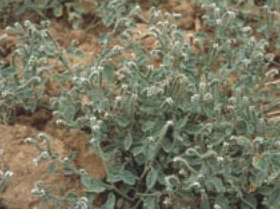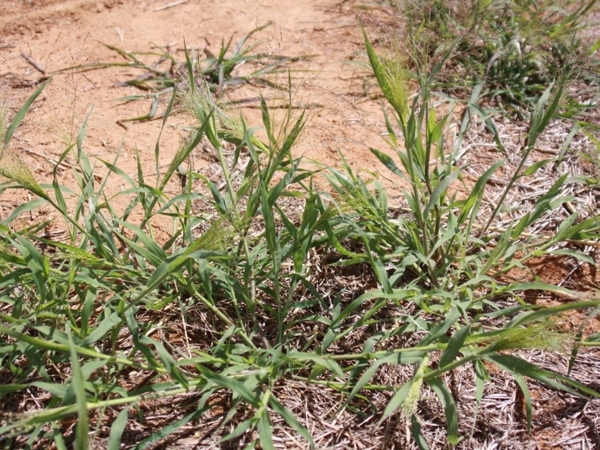Beware toxic weeds that can poison stock
PRODUCTION ADVICE - MARCH 2021 - ANIMAL BIOSECURITY & WELFARE
By Daniella Levick
Veterinary Student
 We are seeing a rapid growth of heliotrope and hairy panic following recent summer rain. Both these weeds have the potential to cause disease in livestock. Watch out for plants that are toxic to livestock, and check stock for signs of toxicity and intervene early for the best chance of stopping the issue.
We are seeing a rapid growth of heliotrope and hairy panic following recent summer rain. Both these weeds have the potential to cause disease in livestock. Watch out for plants that are toxic to livestock, and check stock for signs of toxicity and intervene early for the best chance of stopping the issue.
Common heliotrope
This plant commonly grows over the summer in the Murray region. Sheep are generally more resistant to toxicity than cattle, horses or pigs. However, if enough is eaten, either quickly or over long period there is still the risk of toxicity.
Common heliotrope contains pyrrolizidine alkaloids, which are toxic to the liver. Pyrrolizidine alkaloids are found in all parts of the plant, including the seeds, and remain toxic even in dried plants, meaning that feed contamination poses a risk.
Pyrrolizidine alkaloid toxicity is usually chronic, from ingestion over a long period of time. This means that clinical disease may not be seen until months or years later. They also accumulate in the liver, meaning that ingestion of small amounts over a long period of time can eventually lead to toxicity.
Clinical signs of disease:
- Decreased production
- Photosensitisation – appears like severe sunburn, generally around the face
- Weight loss
Jaundice - Sudden death – usually due to secondary copper poisoning because of reduced liver function
- Neurological signs – associated with ammonia build up in the blood
Management/prevention:
- Pasture management – planting of perennial crops as these will out-compete heliotrope seedlings
- Grazing management
- Avoid overgrazing as this will encourage growth of heliotrope
- Never graze cattle on heliotrope-predominant pastures.
 Hairy panic
Hairy panic
This weed is commonly found in the Murray region, particularly in crop stubbles. Hairy panic is quite palatable, particularly during a dry summer as it offers a green pick. Lambs are the most susceptible to poisoning when ingesting this weed. Stressed/wilted plants may have increased toxicity.
Hairy panic contains compounds known as steroidal and lithogenic saponins. These result in severe liver damage that leads to photosensitisation. Liver damage in sheep also increases the risk of copper toxicity and sudden death.
Clinical signs of disease:
- Photosensitisation - Crusty, red or black scabs on low-wooled areas such as the ears, muzzle, nose and eyelids
- Droopy ears
- Swollen and weepy eyelids
- Decreased production
- Jaundice – yellow eyes/gums
Management/prevention:
- Remove any affected animals from the pasture and keep in a darkened shed. Provide fresh water and cereal hay.
- Avoid high-protein and green feeds as the animals can’t process these due to the liver damage.
- Do not allow young sheep to graze pastures containing hairy panic.
- Grazing management – graze adult sheep or cattle on affected pastures.
If secondary copper poisoning is diagnosed as a result of liver damage, molybdenum supplementation can help. Speak to your vet for more information.
Monitor your animals and your paddocks frequently to try and limit issues with toxic weeds. While the effects of liver damage can sometimes be managed, liver damage is permanent and tends to become more severe over time. Some sensible management now can save you a whole lot of issues in the future.
For more information on these and other livestock issues, call our District Vets on 1300 795 299.